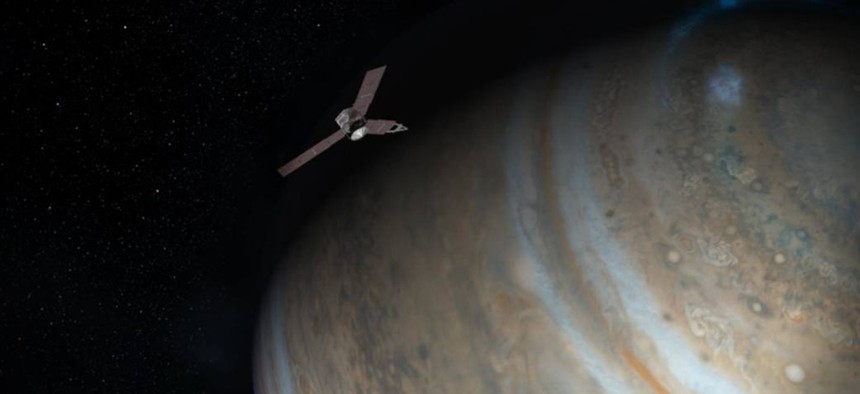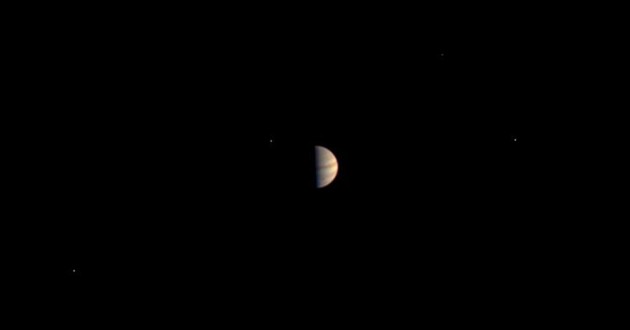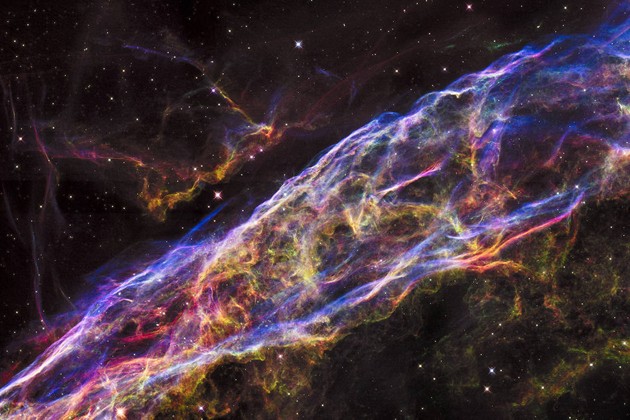Juno's New Images of Jupiter

NASA
NASA releases more than 1,300 unprocessed images from the mission.
If humans paused to marvel at each of the technological miracles that shape our understanding of the universe in 2016, we would be in a constant state of stupefied wonder.
Instead, most of us are able to go about our lives accepting but perhaps not dwelling on the fact that, for example, a bunch of intelligent mammals on a watery planet recently sent a spacecraft hundreds of millions of miles into the blackness of the outer solar system and captured 1,300 photographs of Jupiter and its moons. (And that’s not even the most impressive thing about the Juno mission.)
On Monday, NASA announced it had made all of these photographs available for anyone to download.

If the image above seems a bit subdued to you, it’s probably because science—and, specifically, the Hubble Telescope—has made photographs like, say, this one seem almost commonplace today:

Not so long ago, however, the best view of space you could get from Earth was by tilting your head back and looking up on a superbly clear night. At the right time of year, from the right geographic spot, Jupiter is visible with the naked eye. At midsummer in the Northern Hemisphere, the gargantuan planet appears at twilight, rising when the sun sets and shining brighter than any other world in the dazzling night sky.
Only recently has space photography produced vivid, detailed imagery of the heavens. For centuries, even those who were lucky enough to have access to telescopes had to sketch the distant planets they saw. For everyone else, before space photography, an understanding of what other worlds looked like came from a mix of imagination, drawings and textual descriptions—beautiful though they were.
Consider, for example, this passage of an ode to Jupiter, printed in The New York Times in 1883:
Observers on the earth, nearly 500,000,000 miles away, may watch the process of world-making on this distant sphere. In the belts that diversify his disc, in the huge spots that from time to time agitate his mass, in the immense cloud atmosphere that conceals his fiery nucleus we behold, on a grand scale, the progress of the cooling process that millions of years ago stirred to the depths [of] the earth’s lesser bulk, before it developed to the perfection of its present condition as an abode for animate life... Viewed in this light, every changing belt, every new spot, and every sudden rift are a revelation in Jovian language of the tremendous commotion that will eventually bring order out of chaos.
NASA’s latest images, viewed from the chaos of a violent summer on Earth, offer their own sense of order—or at least relative serenity. They seem so simple at first glance that when I downloaded the images from the Juno site, I thought there had been an error. Each photograph looked like a thin strip of blackness, not a planet in sight. (I’ve cropped it substantially so the image below isn’t even as tall as the raw image.)

It wasn’t until I zoomed in that I saw Jupiter, replicated vertically like it had stumbled into some cosmic photo booth:

The formatting is because of how JunoCam works. Each still is composed of 82 frames, acquired in red, green and blue spectral bands.
“The end result,” NASA explains, “is an image that contains each of these frames vertically stacked on top of one another.”
To produce a film of the Juno approach, the images had to be stacked like a flip book. (The result was astonishing, by the way, and represents “the first time humanity’s been able to see one celestial object go around another,” Scott Bolton, Juno’s principal investigator, told me at the time.) I’m partial to watching the footage without any music, but NASA really went for it here:
Clearly, NASA has created a mesmerizing video of its own. But it’s notable that with the release of the stills that comprised that film, the agency is inviting people to process the images themselves.
And who knows what people might make from what they see in these files? After all, as The New York Times put it in 1883, Jupiter is a “magnificent spectacle of a planet second only to the great sun himself, a miniature solar system with a quartet of revolving satellites, a telescopic wonder on which the eye rests with ever new delight.”





